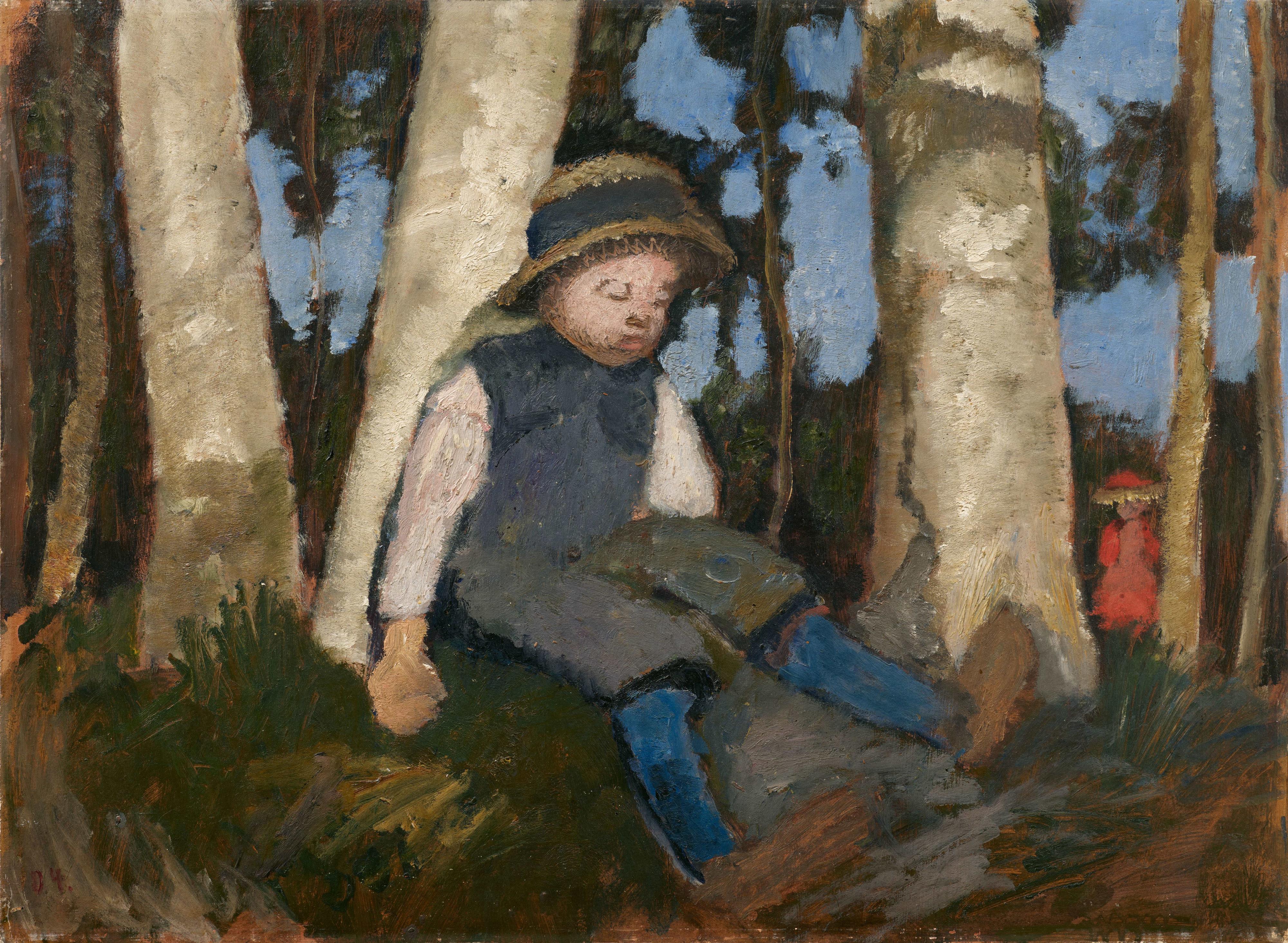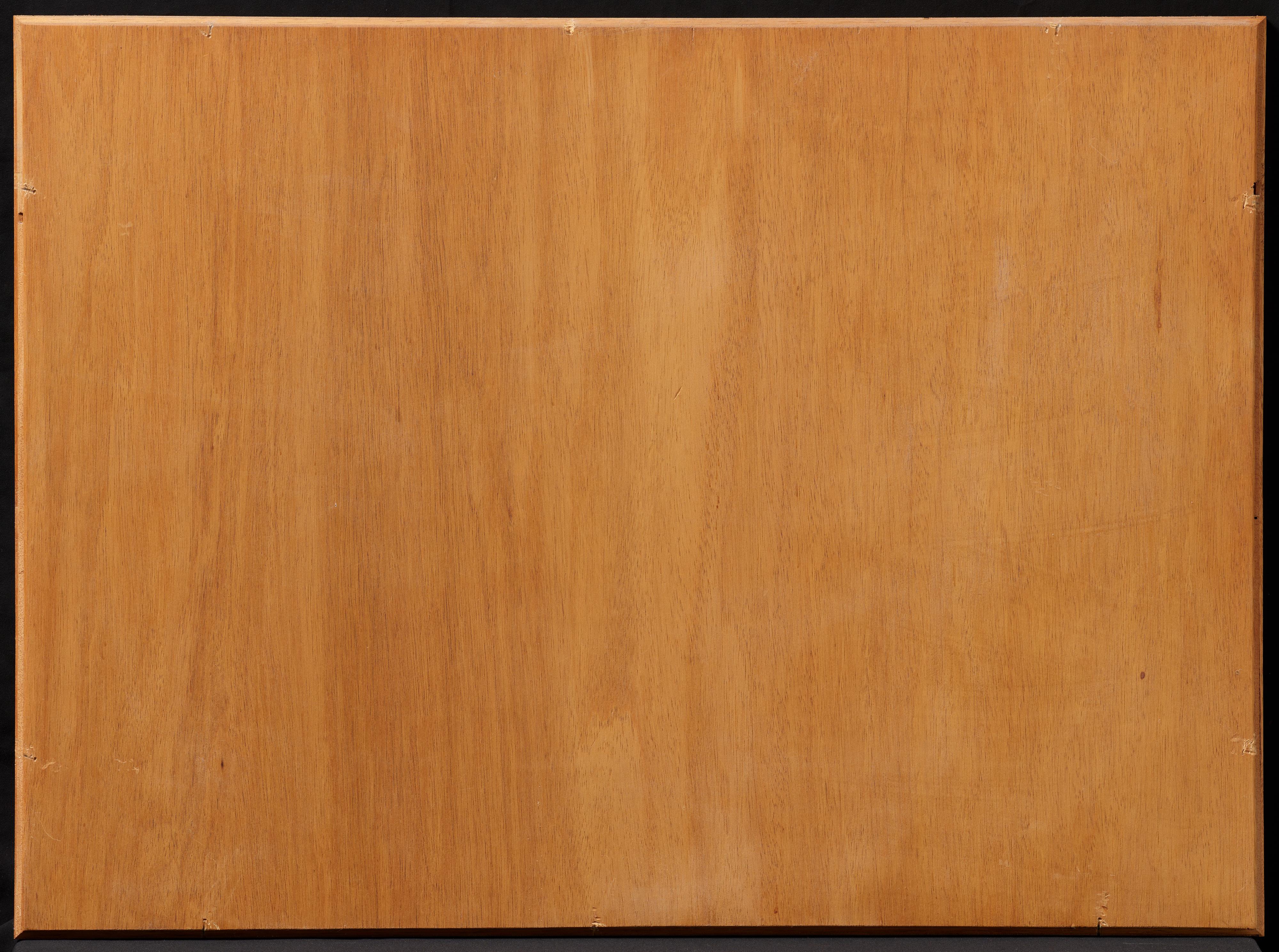Paula Modersohn-Becker
Sitzender Junge mit Strohhut unter Birken
1904
Oil on cardboard, mounted on wooden panel. 52.5 x 71.2 cm. Framed. Dated '04.' in red lower left. - Very good condition, few insignificant small retouchings at lower margin and the boy's shirt and trousers.
Already shown in 1917 at the major Paula Modersohn-Becker exhibition at Hannover’s Kestner Gesellschaft, the provenance of the painting “Sitzender Junge mit Strohhut unter Birken” prominently features Bernhard Hoetger two years later. His purchase of the work in 1919 and its publication in his essay additionally indicate the significance of this captivating picture of a child (see Hoetger, 1919, op. cit.).
The two artists had met in 1906 while both were in the midst of extended stays in Paris, and this meeting developed into an intense collaboration. When World War I began – Paula Modersohn-Becker had already died after giving birth to her child in 1907 – Hoetger and his wife moved to Worpswede, and he explained his choice to live there like this: “In those years, it became more and more clear to me that a landscape in whose air an art like that of Paula Modersohn could grow would also have to be the right atmosphere for my work” (cited in exh. cat. Bernhard Hoetger, Bildhauer – Maler – Baukünstler – Designer, Dortmund, 1984, p. 14).
The people in Worpswede, often placed between the birch trees typical of the north German landscape, became one of the main motifs in the work of Paula Modersohn-Becker. As if searching for a pristine primitivity, she recorded – much like contemporary colleagues who found their motifs in the South Pacific or along the German shores of the Baltic – the rural populace of Worpswede. This led to images of children that are extraordinarily convincing in their concentrated simplicity: among these, the present example is remarkable for the monumentality of the natural element and the powerful presence of the boy. It is no coincidence that the figure depicted in bold red in the middle ground is reminiscent of a fly agaric mushroom, and she establishes a counterpoint to the earthy colours of the forest while gauging the depth of the depicted space. In terms of colour, the boy’s clothes correspond to the white of the stout birch trunks and his shoes to the earth tone of the forest floor, integrating the figure of the child into the landscape, while the blue of the sky is repeated in the blue of his stockings. The work depicts a sort of allegorical image of the common roots of humankind and nature.
Catalogue Raisonné
Busch/Schicketanz/Werner 485
Provenance
Estate of the artist; Bernhard Hoetger, Worpswede; family ownership for three generations, private collection, Bavaria
Literature
Gustav Pauli, Paula Modersohn-Becker, in: Das Neue Bild, Bücher für die Kunst der Gegenwart, (ed. Carl Heise), Vol. 1, Leipzig 1919, no. 75; Bernhard Hoetger, Erinnerungen an Paula Modersohn, in: C.e. Uphoff, Paula Modersohn, Junge Kunst, Vol. 2, Leipzig 1919, with ill. ("Knabe unter Birken"); Günter Busch, Worpswede gestern und heute, in: Worpsweder Biographie, Bremen 1953, with ill. p.8
Exhibitions
Hanover 1917 (Kestner-Gesellschaft), X. Sonderausstellung, Paula Modersohn. Gemälde, Zeichnungen, Radierungen. cat. no. 39; Wuppertal 1954 (Städtisches Museum), Paula Modersohn-Becker. Bernhard Hoetger, cat. no.28




